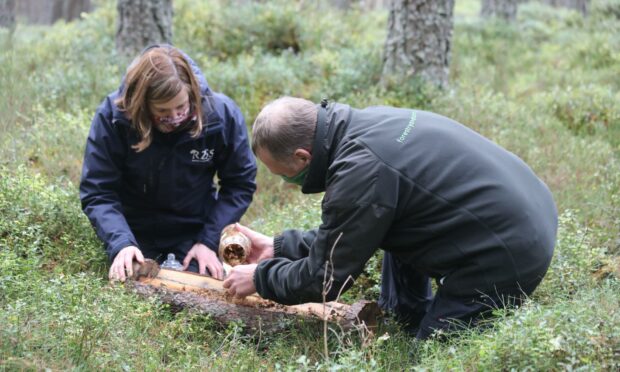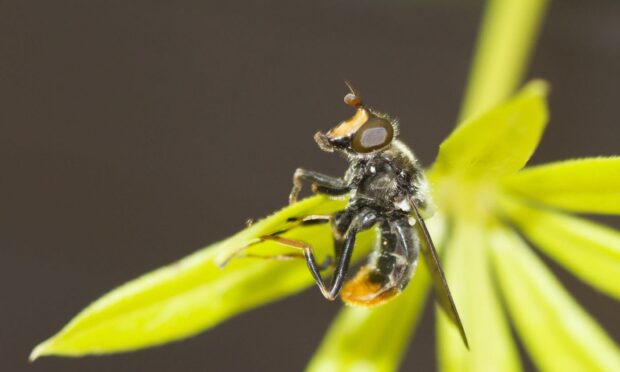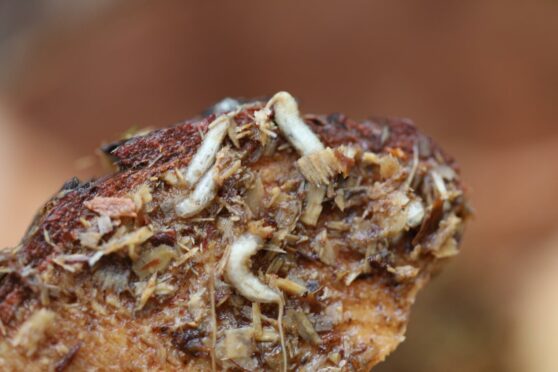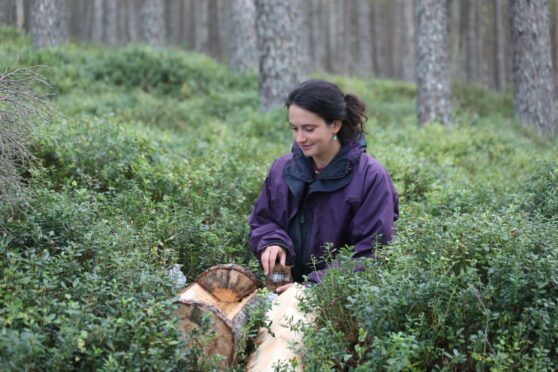After fighting back from extinction, it’s time for a rare native insect to spread its wings.
The biggest ever releases of pine hoverflies is boosting the wild population of the critically endangered species.
More than 3,000 pine hoverfly larvae are being released in three carefully chosen forest habitats in the Cairngorms National Park.
No one had seen an adult pine hoverfly in the wild in Britain for over eight years.
Breeding programme has reversed the decline of pine hoverflies
However, a successful conservation breeding programme at the Highland Wildlife Park has reversed the species’ decline.
Just 25 larvae were brought into the Royal Zoological Society of Scotland’s (RZSS) programme in 2019.
In August it was revealed that the pine hoverflies had a record-breaking breeding season.
Staff witnessed the hatching of 6,925 larvae – the most ever bred in captivity.
Now the releases are being carried out by the RZSS and the RSPB-led Rare Invertebrates in the Cairngorms (RIC) project.
The first took place at Forestry and Land Scotland’s Ryvoan, Glenmore site and others will follow at RSPB’s Abernethy Forest.
Dr Helen Taylor, RZSS conservation programme manager, said: “This is a very exciting day for pine hoverfly conservation in Britain.
“Following habitat loss over the past century, our pine hoverflies are on the brink of extinction, with the majority of the known native population being cared for by our charity’s dedicated team at Highland Wildlife Park.
Insects often overlooked ‘until it is too late’
“Like many other insects, pine hoverflies play an important role in maintaining healthy ecosystems, but are sadly often overlooked until it is too late.
“It is absolutely incredible to be in a position to release over 3,000 pine hoverfly larvae into the wild this year after just 25 larvae were brought into our conservation breeding programme in 2019.”
She added: “Thanks to a huge amount of collaboration and support from our partners, funders and other conservation champions, including visitors to our parks, the future is starting to look brighter for one of Britain’s most endangered species.”
Genevieve Tompkins, RIC project officer, said the pine hoverflies will have the best chance of survival being released at sites owned by organisations committed to managing land for biodiversity benefits.
She said: “There has been some amazing work from the landowners, volunteers, and all our partner organisations in terms of identifying the best release sites to creating artificial pine rot holes at those sites to house the larvae.
“With another release planned for March, this really is a significant effort to establish vital new populations of this species, providing a lifeline before it’s too late.
“We’ll have to wait until we conduct surveys next September to see whether our work has led to successful breeding in the wild.
“But everything is looking a lot more hopeful that it did 12 months ago.”
Project is a key part of nature action plan
The Cairngorms National Park is home to one quarter of the UK’s rare and endangered species.
Andy Ford, the park authority’s head of conservation, said: “This project is a key part of the five-year Cairngorms Nature Action Plan, which brings together a wider variety of people and organisations to safeguard and enhance nature in the national park.”
Funding for the RZSS breeding programme has come from the park authority, Forestry and Land Scotland, Marvelous Europe Inc., NatureScot and The National Geographic Society.
Support also came from the Scottish Government’s zoos and aquariums fund and the People’s Postcode Lottery.
The Rare Invertebrates in the Cairngorms project is a partnership between the RSPB, Cairngorms National Park Authority, Buglife Scotland, Butterfly Conservation Scotland, and NatureScot.
Donations to support RZSS conservation work in Scotland and around the world can be made online at rzss.org.uk/support



